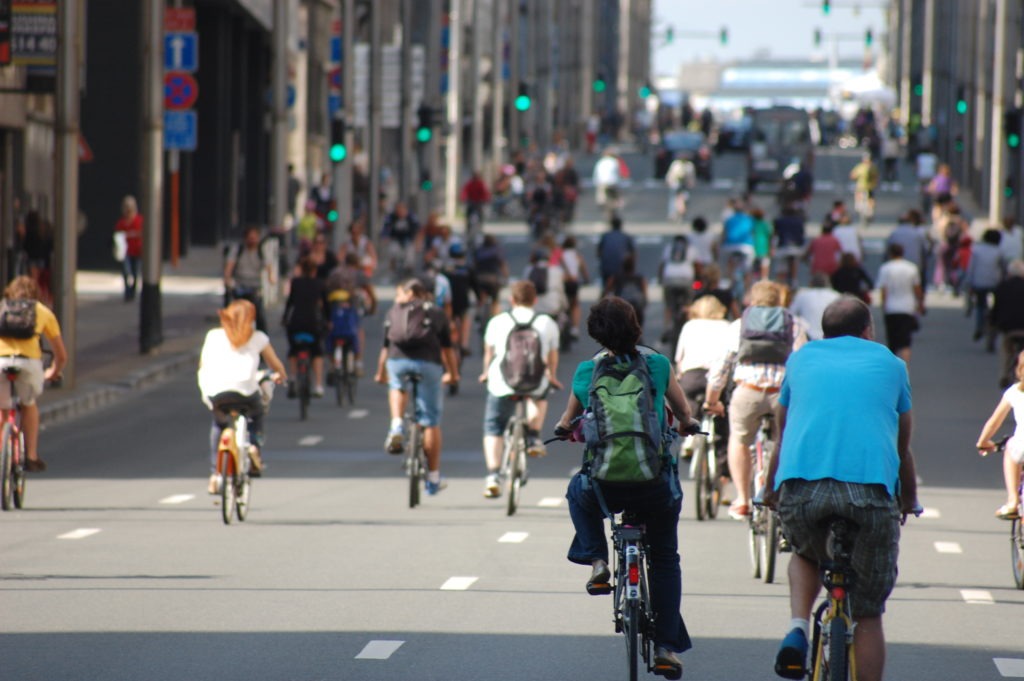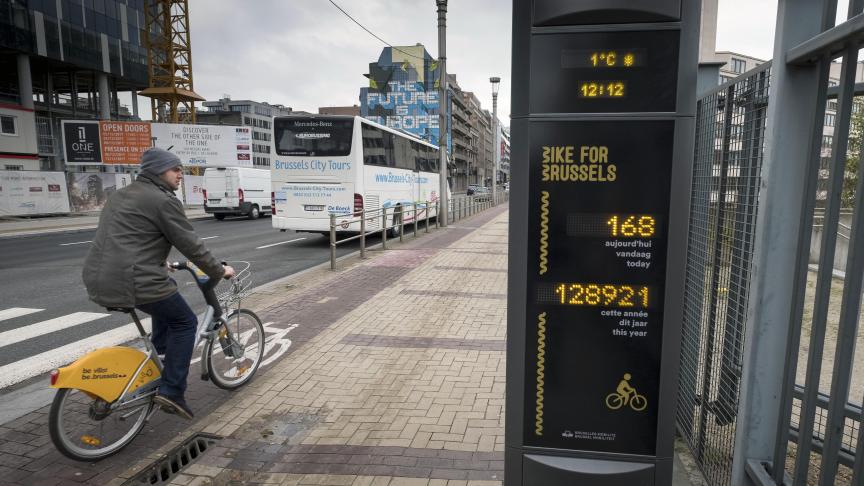Anyone familiar with Brussels' cycle paths will probably have come across the grey electric information panels installed on several of the city's routes.
On the display can be found the temperature and time, as well as the number of cyclists that have passed that day and the total number to have used that route since the start of the year.
Getting around on two wheels is becoming ever-more popular in the capital, not least as the price of fuel lurches ever higher and road updates make it more difficult to drive through the city.
Yet alongside factors that may force drivers to look to alternative means of transport for getting around, the city is implementing a variety of incentives and improvements to ensure that those who do swap four wheels for two have an easy ride.
Accurate data for a better city
The cycle counters installed by Brussels Mobility, the public authority that oversees travel infrastructure in the city, gather important data that will be used to develop future policies and improvements on the ground. In addition, the information is available to the public.
This makes it possible to track the progression of cycling in Brussels both on an annual basis as well as in real-time. Of the 20 cycle counters that have so far been installed, those on Rue de la Loi, Boulevard Général Jacques, and Rue des Nerviens in Etterbeek are some of the most frequented by cyclists.
Yet the most popular route to take on two wheels is on the cycle path that follows the canal in Molenbeek. On 18 August alone, the counter recorded 3237 bicycles passing. On Rue de la Loi, cycle traffic increased by 70% between June 2021 and June 2022.
Related News
- 34 cyclists fined every day in Belgium
- Hidden Belgium: Cycle through the water
- Flanders updates bicycle 'infrastructure handbook' for wider paths and more space
It is now five years since the cycle path that lines the busy Rue de la Loi was put in place, a move which saw the lanes dedicated to motor vehicles reduced from four to three. This was also the first site to have a cycle counter installed, in September 2017.
Inge Paemen, spokesperson for Brussels Mobility, explains that the aim of the counters is to "make cyclists statistically visible and to do so in a way that individuals can see that they are part of a large community."
Prior to installing the counters, cyclists had been counted within far more limited timeframes. The permanent installation of air tubes beneath the cycle path allows for two-wheeled traffic to be monitored permanently.

Bikes out in full force on the streets of Brussels for the annual Car Free Sunday event, which this year will be 18 September. Credit: European Cyclists' Federation
GRACQ (the Belgian Group for research and action for daily cyclists) has supported the city's initiatives since the start, explains spokesperson Gaël De Meyere: "This proves, contrary to what some people insist, that the number of cyclists is rising, especially in Brussels, and that the cycle paths are an important part of this shift."
"Back in 2017, the aim of the cycle counters was simply to encourage cyclists by showing that they weren't alone. Today, they are also a vital tool for policy planning."

